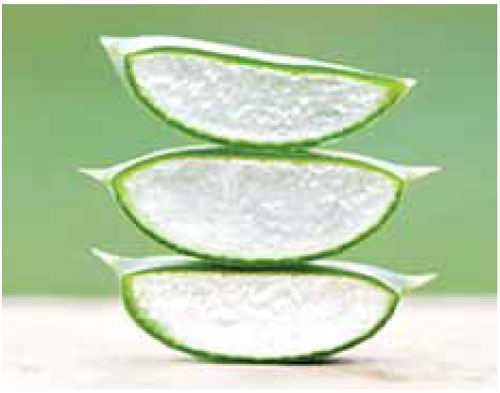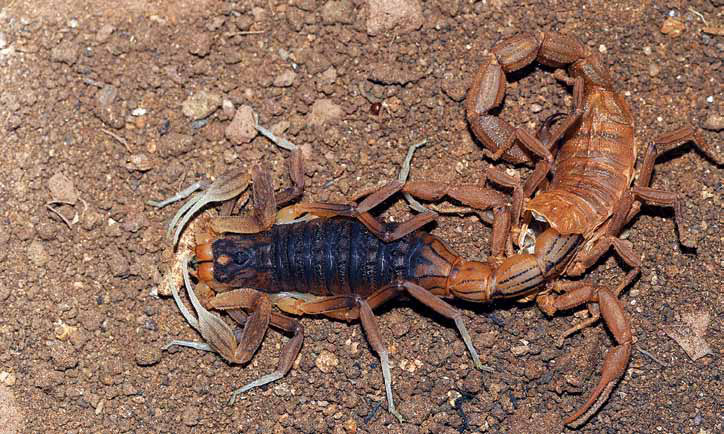
Aloevera (Aloe barbandensis)
By R. K. Nigam
Aloe-vera is a succulent plant species, evergreen perennial plant originated from the Arabian peninsula, but grows in tropical, semitropical and arid climates around the world (It grows in hot and cold both climates, also known as a magic plant, Aloe-Vera is a native plant of Africa).
The plant has long triangular thick fleshy leaves, green in color, edge has serrate and small white teeth, lanceolate shape leaves having sharp point, stemless, short stemmed succulent plant, which grows about 60-110 cm tall and has fibrous type root system. It produces flower in summer on a spike 80-85 cm tall. In India, it is found in Rajasthan, Andhra Pradesh, Gujarat, Maharashtra, Madhya Pradesh and a few other states as well. It requires very less quantity of water to grow. It derives its name from the Arabic word “Alloeh” which means-shining bitter substance, while vera in latin means “true”. Aloe-vera is used in medicinal (its impressive healing and therapeutic properties) as well as beauty purposes, is safe to use, can be applied externally and consumed in raw form too.
Vernacular name of Aloe-Vera-Family- Aloeaceae (Liliaceae) Sanskrit (Ghritkumari, Kumari, Vipulasrava), English (Indian Aloe, Aloe Vera), Hindi name (Guarpatha, Ghikanvar, Kumari, Rambans), Malyalam (Kumara, Katta Vazha), Marathi (Korphad, Kunvarpata), Bangali (Ghritkumari), Tamil (Chirukuttali), Botanical name (Aloe barbandensis).
Aloe Vera Properties

- Some ayurvedic properties of Aloe Vera are ; Rasa / Taste – (Tikta / Bitter), Qualities – (Heaviness / Snigdha / Sticky slimy), Vipaka – (Katu / Undergoes pungent taste conversion after digestion), Veerya /Potency – (Sheeta / Cold potency), Karma / Effect on Tridosha-Balance all the three doshas (Vata, Kapha and Pitta), Part used Leaves. It is a rejuvenating herb and part of a special class of Ayurvedic herbs known as Rasayana.
- Aloe Vera, when applied on the skin, has soothing and cooling effects as well as its antimicrobial and anti fungal properties, increases blood flow in the applied area, helps in healing burns and wounds and also in reducing inflammation caused by acne
- Aloe Vera also helps in controlling constipation due to its laxative and Vata balancing properties. It acts as a natural laxative due to presence of Anthraquinones, which speed up bowel movement and helps in easy excretion. It also cleanses and relaxes the digestive tract of our body and improves digestion.
- Acid reflux can arise when stomach acid flows back in the esophagus, its symptoms are burning sensation in the chest, bloating, nausea and cough. Bad bacterias can produce gas that can lead to bloating and uneasiness in our body. The antibacterial properties of Aloe Vera kill the bad bacteria associated with acid reflux and improves digestion. It also helps to minimize unhealthy bacterias in our gut and keeps our intestinal flora in balance. It is a Vermifuge also which makes the body free from intestinal worms.
- Aloe Vera helps to manage diabetes due to presence of many phytochemicals , which remove Ama (Toxic product ) and control aggravated Vata due to deepan and pachan property of the Aloe Vera and helps in controlling high blood sugar levels. It also improves the responsiveness of the body tissues towards insulin, making insulin more effective. Aloe Vera prevents cell damage such as ulcer, wound, kidney damage associated with diabetes due to its antioxidant property.
- Presence of phytosterol, glucomannan in Aloe Vera helps in lowering LDL level, Triglycerides prevents artery blockage regulates blood pressure, improves circulation and oxidation of blood, regulates cholesterol in blood and makes less sticky with the use of Aloe Vera, hence helps to lower the risk of heart disease. Ayurvedic point of view controls cholesterol because of its Ama (toxin)reducing property it removes blockage from vessels by eliminating toxin.
- Aloevera juice is excellent for the liver because of its hydrating and phytonutrients properties. Liver functions best when the body is adequately nourished and hydrated. In take of AloeVera gel helps purify the blood and promote liver function. It is an excellent way to keep our liver healthy.
- Aloe Vera produces two substances, Gel and Latex. Gel is a clear and odorless substance which is obtained from the inner part of the leaf. Latex is a yellow substance obtained from the outer part of the leaf. Latex is used as a laxative, but regular consumption is not good, while the gel can be consumed more frequently.
- Aloe vera may be helpful in alleviating depression due to the presence of flavonoids and amino acids. Vata is responsible for proper functioning of the nervous system and depression. Aloe Vera has a Vata balancing property and helps to control depression.
- Aloe gel is widely used in anti-ageing skin creams and lotions. It moisturizes skin and promotes skin regeneration, reduces first signs of aging such as wrinkles and fine lines. It has collagen – boosting capabilities that helps the body replace damaged skin cells.
- Aloe Vera has antioxidant and antibacterial properties, which helps in fighting against bacterial infection of the skin. Traditionally it is used in the treatment of acne, dandruff and other common bacterial skin infections . Aloe-vera has an anti-inflammatory property which is effective in controlling acne and reducing the redness caused by it. The enzyme present in Aloe-vera forms an antibacterial coating on the skin to protect it against acne-causing bacterias.
- Aloe Vera has moisturizing effect, when used as conditioner it helps in maintaining hair health and balances pH of the scalp reducing. Aloe Vera gel is a good source of vitamins and enzymes which help nourish the hair follicles and leads to a faster hair growth.
- Aloe vera helps in weight loss through its detoxifying, laxative and metabolic effect. Aloe vera can help with both metabolic processes. The vitamin B and enzyme in aloe vera helps in burning fat.
- It is considered safe to eat, however, while making our own gel from the aloe leaves, we should be cautious not to consume too much of latex. Aloe Vera is a gelatinous plant food, which moves through the intestinal tract absorbing toxins and then gets them eliminated from the colon.
Chemical Properties of Aloe vera
- Aloe Vera leaf contains 98% water, protein containing 18-20 Amino acids (It contains Amino acid-which are the building blocks of protein) ,Vitamins and certain compounds. The total solid content of Aloe-Vera gel is 0.66% and soluble solid is 0.56 % with some seasonal fluctuation. Gel is a translucent product in its leaves.
- Aloe Vera leaf is composed of three layers: 1- An inner clear gel that contains 98% water and 1% filled with bio chemicals such as glucomannans, amino acids, lipids, sterols and vitamins etc. 2- The middle layer of latex, which has a bitter yellow color sap in it and contains anthraquinones and glycosides etc. 3 –The outer thick layer called as rind, which has protective function and synthesizes carbohydrate and proteins.
- On a dry matter basis aloe-gel consists of poly-saccharides (53 %), sugar (17%), minerals (16%), proteins (7%), lipid (5%) and phenolic compounds. Aloe Vera contains nearly more than 75 potential active constituents: vitamins, enzymes, minerals, sugars, lignin, saponins, salicylic acid and important amino acids, which are responsible for multifunctional activity of Aloe.
- Aloe-vera contains 12 types of Anthraquinones which are phenolic compounds, many of them possess anti bacterial, anti-viral, Fungicidal, Insecticidal properties. They exhibit laxative, diuretic, estrogenic and immuno modulatory effects. Aloe latex contains-Aloin, which is an Anthraquinone that gives Aloevera it may help constipation. Aloin is an example of an Anthraquinone found in the latex that may give the plant its laxative qualities. Aloe-vera also has wound healing properties.
- Aloe-Vera contains the most active compounds Aloe-emodin, Aloin, Aloesin, Emodin and Ace mannan. Aloe emodin is an Anthraquinone and an isomer of Emodin present in the Aloe latex. It exhibits many pharmacological activities including antivirus, anti-inflammatory, anti-bacterial, Neuro-protective and Hepato-protective activities. Aloin is an active ingredient found in the leaves of Aloe-Vera, which haveantiinflammatory, anti-cancer, antibacterial and antioxidant properties. Aloesin is a natural poly-phenol compound, which may minimize the systemic oxidative stress and it may be useful for wound and burn healing properties and antioxidants. Emodin is a natural Anthraquinone, which has many biological activities, including diuretic, anti-bacterial, anti-ulcer, anti-inflammatory properties. Ace-Mannan is the main bioactive polysaccharides of Aloe Vera, possesses antioxidant, wound healing, Neuro-protective and intestinal health promotion activities .
- Anti-oxidant are important for our health. Aloe-vera gel contains a powerful antioxidant belonging to a large family of substances known as Polyphenols. These Polyphenols, along with several other compounds in Aloe vera, may inhibit the growth of certain bacteria that can cause infection in humans.
- It contains vitamins A, C and E, they are antioxidants, which may neutralize free radicals. It also contains vitamin B 12, folic acid, Magnesium, Calcium, Beta-carotene and choline also. Aloe Vera juice is alkaline in nature.
- It contains various minerals like calcium, copper, magnesium, potassium, zinc and other, which are essential for proper functioning of various enzyme systems in different metabolic pathways and few are anti-oxidant.
- Aloe-vera also contains about eight types of enzymes, which are Aliiase, Alkaline Phosphatase, Amylase, Lipase, Cellulase, Bradykinase and others. Amylase enzymes help break down carbs so that they are easily absorbed by the body. Bradykinase may help to minimize excessive inflammation when applied to the skin topically. Lipase enzyme helps to digest fats and lipids and gallbladder functions. Alkaline phosphatase enzymes that help fight off bad bacterias in the gut and help in improving digestion, makes bone strong.
- Aloevera has four plant Steroids; such as Cholesterol, Campesterol, Betasitosterol and Lupeol, which give medicinal property to the Aloe Vera plant (they may help in reducing allergies and acid indigestion symptoms). All these have anti-inflammatory action and Lupeol also possesses antiseptic and analgesic properties. Campesterol may help in reducing the absorption of cholesterol in the human intestine. All plant sterol may also act directly on intestinal cells and affect transporter proteins. Beta-sitosterol helps to minimize cholesterol level in the blood. Lupeol is a Triterpenoid and acts as an anti-inflammatory agent.
Aloe Vera uses
- For constipation & other-Take 2-3 spoon aloe vera fresh or juice is better, add same quantity of water to it , then drink empty stomach in morning once a day with one aloe vera capsule after food. This drink will help in constipation, control diabetes, depression, control cholesterol levels and triglycerides.
- Aloe Vera drink should ideally be consumed on an empty stomach or after breakfast, juice with tulsi, Amla and Giloy juice.
- Fresh Aloe Vera is more useful than packed Aloe Vera. The useful parts of Aloe are the gel and latex. This is obtained from the cells in the center of the leaf , and the latex is obtained from the cells just beneath the leaf skin. Aloe latex contains chemicals that work as a laxative.
- Irritable bowel syndrome (IBS) and acid reflux find great remedies if aloe Vera is consumed. It may help to reduce the amount of unhealthy bacteria in our gut and keep our intestine flora in balance.
Aloe Vera Side effects
(Before using Aloe Vera as medicine, kindly consult doctor)
- Prolong use of Aloe Vera for laxative effect may induce diarrhea and cramping and regular consumption of aloe latex is known to cause gastrointestinal problems.
- Aloe gel should not be given orally to children below 12 years of age, it may cause stomach discomfort and diarrhea.
- The Aloe vera gel may not be safe for those taking certain medications.
Disclaimer
The content about Aloe-vera is purely informative and educational in nature and should not be taken as medical advice. Kindly consult a doctor before consuming Aloe vera.




